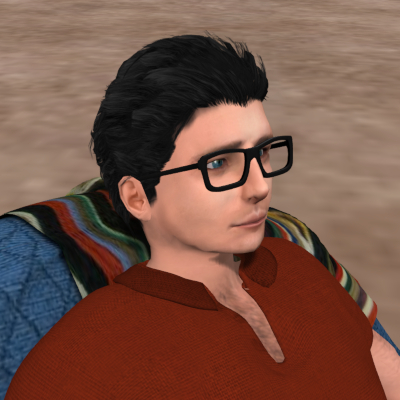

That’s a bit more complicated than I thought.
Then allow me to make it less complicated. Or even more complicated.
And I’m not sure if Lemmy is the right choice for you anyways. The OpenSim community doesn’t seem very active. And since you’re talking about 13.000 character descriptions… That will also not fly on Lemmy.
It has never been my plan to post images with such massive descriptions on Lemmy. Lemmy doesn’t require image descriptions. It doesn’t require alt-text either. It doesn’t even officially support alt-text. Lemmy doesn’t live and enforce a culture of accessibility.
Most importantly, though: The OpenSim community has no subscribers on general-purpose Mastodon instances. What’s posted there will most likely never appear in the federated timeline of e.g. mastodon.social where people could get all riled up about the lack of alt-text and image description.
Besides, the 13,000-character image description is outdated already. My image descriptions have grown since then. 25,000 characters, 40,000 characters, and yesterday, I’ve posted a 60,000-character description for an image that also got an alt-text precisely at Mastodon’s limit of 1,500 characters.
And then Mastodon is a microblogging platform. Originally intended for short messages.
**I don’t intend to post my images on Mastodon either.
I intend to keep posting them on Hubzilla (official website).**
Hubzilla has got nothing to do with Mastodon. It was first released in 2015, ten months before Mastodon. It was renamed and repurposed from the Red Matrix from 2012 which is a fork of Friendica from 2010.
Hubzilla is vastly different from Mastodon in just about everything. Like its predecessors, it has never had a character limit, and it has always had the full set of features of text formatting and post design as any full-blown long-form blogging platform out there. In fact, maybe even more than that.
Hubzilla is not a microblogging project. It can work as one, but it can seamlessly transition between microblogging and fully featured long-form blogging and everything in-between. Hubzilla is the Swiss army knife of the Fediverse, renamed from a fork of a Facebook alternative that was created also with blogging in mind.
So I want to post my images on Hubzilla.
What does this have to do with Mastodon then?
It has to do with Mastodon that I’ve got lots of Mastodon connections. All my OpenSim connections except for one are on Mastodon, and I think all of these are on one and the same OpenSim-themed instance. But on top of that, I’ve got hundreds of Mastodon connections all over the place, including mastodon.social and other big general-purpose instances.
And all those non-OpenSim Mastodon connections came to exist because they followed me. It was not my decision to follow them. They followed me because they expected me to explain the Fediverse beyond Mastodon to them because I had recently done so. Or they followed me because they had freshly arrived from Twitter, and they desperately needed Mastodon to feel like Twitter, including lots of uninteresting background noise in their personal timeline, so they followed everyone and everything they came across in the federated timeline.
So my image posts on Hubzilla will automatically federate to Mastodon and appear in people’s Mastodon timelines. And it isn’t my decision.
Sure, on Hubzilla, I have the power to limit precisely who can see my posts by only sending them to specific connections. But I want the Fediverse world out there to see the marvels of OpenSim, to learn that free, decentralised 3-D virtual worlds have been reality since 2007, that “the metaverse” is anything but dead and not invented by Zuckerberg. I don’t want to remain stuck in an echo chamber.
Oh, and by the way: Mastodon can receive posts up to a maximum length of 100,000 characters by default. Also, Mastodon does not truncate long posts. It only truncates alt-text that exceeds 1,500 characters. But it leaves posts up to 100,000 characters as intact as any other post and probably simply rejects longer posts.
It might be you using the wrong tool for your task, since it’s intended for a different purpose and you’d need a different tool.
My tool of choice is Hubzilla. And there’s hardly anything better in the Fediverse for what I do than Hubzilla.
But it could very well the case that the alt-text and character limits of the platforms aren’t the issue here.
They’re only indirectly. With that, I mean that Mastodon’s default limit of 500 characters is deeply engrained in Mastodon’s culture, and Mastodon’s culture is influenced by this limitation. For example, 500 characters make image descriptions in the post impossible. Thus, they’re not part of Mastodon’s culture. Thus, the very concept, the very idea is completely unimaginable to Mastodon users. Because as per Mastodon’s unwritten rules, “alt-text” and “image description” are mutually synonymous. They mean the exact same thing. Everything that describes the image goes into the alt-text, and that’s the way it is, full stop.
There are some that are meant for long texts.
Hubzilla is meant for long texts. It has always been.
And you can even use Wordpress or something like that, do your own blog and install an ActivityPub plugin if you want a connection to the Fediverse.
And Hubzilla is every bit as capable of long-form blogging as WordPress.
There’s no need to have one separate tool for each task if you already have one tool that can cover all these tasks. And Hubzilla can.
Ultimately, I haven’t seen your posts/toots.
Here’s my most recent image post from yesterday.
60,000+ characters of full image description, my longest one so far. Plus precisely 1,500 characters of alt-text. And I actually had to limit myself in comparison to earlier posts. No detailed descriptions of images within the image. No transcripts of text on images within the image. No mentioning in the alt-text where exactly to find the full description.
And I don’t really know the alt-text culture on Mastodon.
And I’m trying to explain it to you.
Maybe it’s easier to experience first-hand, to see it with your own very eyes. Go through what appears on mastodon.social under certain hashtags and do so regularly for a few weeks or months:
- #alttext, #alttxt
- #imagedescription, #imagedescriptions
- #bildbeschreibung, #bildbeschreibungen, #bibesch
Also, check the posts from @alttexthalloffame.
Is it really necessary to write that super detailed description in an alt-text?
In the case of the image I’ve posted yesterday, and seeing as that post went out to general-purpose Mastodon instances and into the realm of Mastodon culture, definitely yes.
Oh, and in case you haven’t understood that yet because it’s so out-of-whack: I describe my images twice. One, a short description with no explanations in alt-text. Two, a full, detailed description with all necessary explanations in the post text body itself. The latter has to be even more detailed. And here’s my explanation why.
As far as I’ve learned about alt-text in webdesign, that is originally intended to give a concise description of the image in the context regarding the rest of the text. It is meant to be short and concise, like a tweet.
Alt-text rules for webdesign are halfway useless in social media.
And alt-text rules for webdesign, as well as alt-text rules for corporate American social media silos, are even more useless on Mastodon. Mastodon’s alt-text culture has nothing to do with that.
I’d put that detailed description into the normal text.
Again, I already do that with the full description.
But Mastodon insists, insists, insists in an actually descriptive image description in alt-text, no matter what. For one, out of principle. Besides, they can’t imagine there being an image description in the post text (which I hide behind a summary/content warning that they have to click to open first) because this is technically impossible on Mastodon.
So I have to describe the same image once more, this time in the alt-text, in addition to the full description in the post.
Maybe make it a spoiler so it collapses.
I can do that on Hubzilla. But Mastodon doesn’t support spoiler tags.
Most frontends for Mastodon collapse longer posts, the official Web interface as well as probably all third-party mobile apps, only the official mobile app doesn’t.
Content warnings which are the same as summaries on StatusNet/GNU social/Friendica/Hubzilla collapse posts, too, or rather hide them. I always give one of these when I post over 500 characters, so my image posts do collapse for just about everyone.
And long descriptions go into the body text, not the alt-text.
And once again, that’s what I already do. In addition to the shorter description in the alt-text.

At least hardly anyone on Lemmy believes the Fediverse was invented by Eugen Rochko in 2022 as a reaction upon Elon Musk’s announcement to buy Twitter.